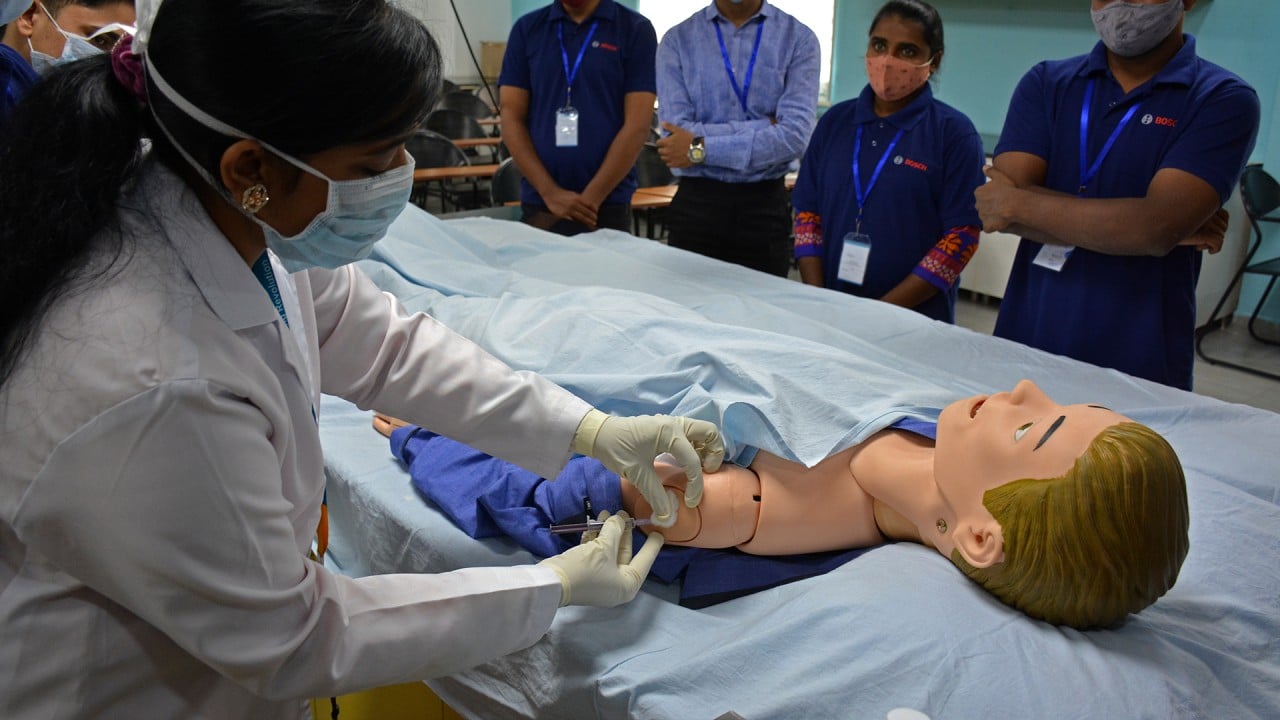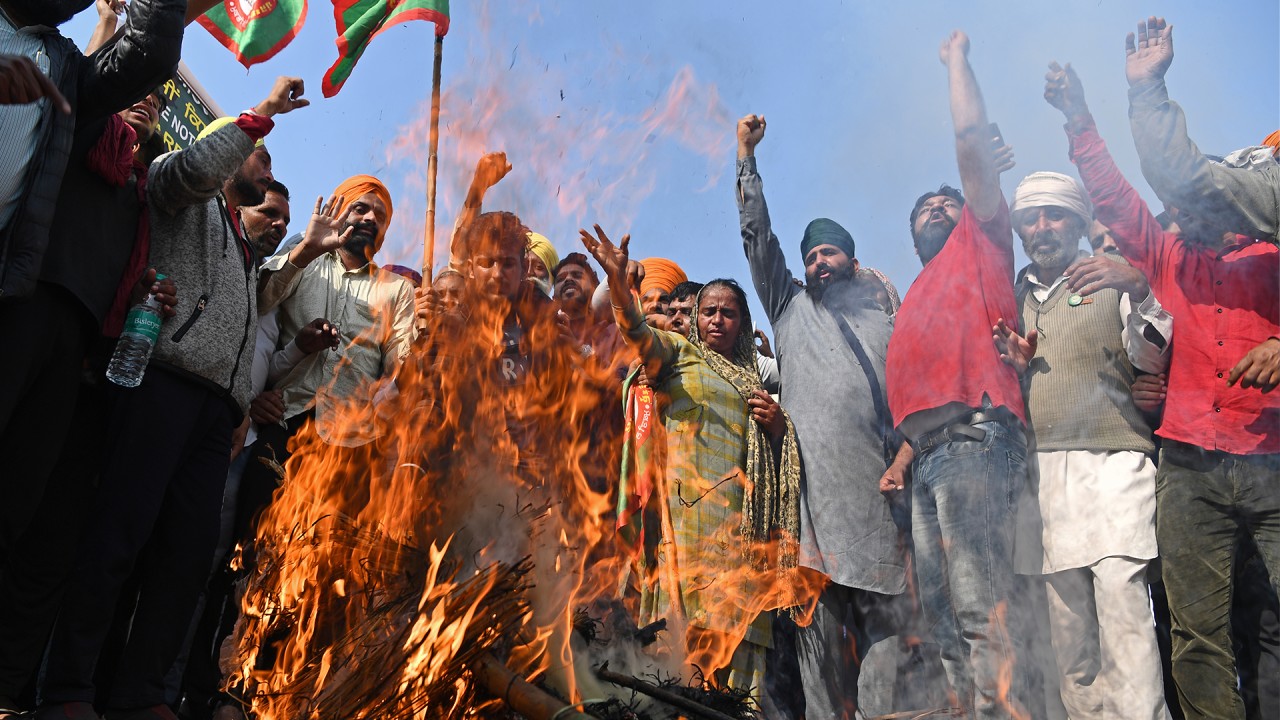
02:15
India trains workers to handle Covid-19 mass vaccination programme
As India watches the Chinese economy pulls farther ahead of its own, it must realise a growth model built on a one-party system is a poor fit for India’s diverse democracy. Policies formulated in the comfort of government offices cannot be pushed through with brute force

At the beginning of this millennium, experts and analysts had written reams about how the balance of power and trade was shifting from the West to the East. China and India were seen as propelling this, and the two countries were spoken in the same breath as future powerhouses that will be pivotal in a new economic order.
By then, China had firmly established itself as the factory of the world, whereas India was moving up as a provider of back-end services as multinationals outsourced their administrative and software management to the country. Two decades down the line, China continues to strengthen its position, while India is struggling to keep its economy moving forward and has almost dropped out of contention as a future economic powerhouse.
The last time the Indian economy recorded a healthy growth of around 8 per cent was in 2016. It has since been sliding down.
After Narendra Modi took over as the prime minister in 2014, many had expected the Indian economy to be put on a fast track as the preceding years had seen the country stumble from one corruption scandal after the other, blunting its growth.
But six years later, the Modi government is now presiding over one of the worst economic periods for the country, with the Covid-19 pandemic ravaging different sectors of society.

02:15
India trains workers to handle Covid-19 mass vaccination programme
More worryingly, Modi’s supporters and economic advisers look to the Chinese growth model for inspiration, without realising that the two societies are dissimilar, like apple and orange. The Chinese dragon can move faster, twisting whichever way necessary as it has a political system under one-party communist rule that was honed to drive people like a herd. India, a multiparty democracy, has always been like an elephant that needs more time and space to move ahead.
Without considering this fundamental difference, the Indian administration and economic thinkers devise policies and programmes and push them through, and get frustrated when opposition and hurdles arise along the way. One top official, who is clearly unable to understand that a one-party dictatorship is impossible in a diverse nation like India, even blamed “too much democracy” for making reforms difficult.
Thus, they undertook a disastrous demonetisation whereby some 80 per cent of the currency was withdrawn from circulation with a notice of few hours. They also initiated a confusing goods and services tax regime which only led to a sluggish business sector and deeper woes.
Meanwhile, programmes launched with great fanfare, like Make in India, to attract foreign investors to start factories, fell well short of declared targets. This has exacerbated the heartburn over China’s economic success and India’s failure.
Nothing had changed in India’s system of governance since the early 2000s, when the country was notching up a rapid growth rate. Blaming democracy and opponents of policies for the current hurdles is akin to a bad worker blaming his tools.

‘Our children will starve’: Indian farmers defend protests against new laws as workers join strike
While the Modi administration continues to paint a bright picture of the future despite the setbacks inflicted by the raging pandemic in the country, the disconnect between the lower sections of society and the official policies is becoming strikingly evident.
The pictures of tens of thousands walking hundreds of kilometres with their mere belongings to get home after Modi imposed a countrywide lockdown were a telling example of this.
The ongoing farmers’ rallies around New Delhi in opposition to laws aimed at liberalising the agriculture sector show that policies formulated in the comfort of government offices and pushed through with brute force can lead to unforeseen consequences that may well spin out of control.
The challenge for any Indian government is that the nation comprises 28 states and eight administrative entities, often ruled by parties with different ideologies, not to mention the ethnic, language, and cultural diversity. For the country to move forward, with steady economic growth and towards prosperity, all diverse forces should unite for a common goal.
The government should act like a mahout guiding an elephant forward, instead of making it twist and turn like a dragon.
India can show that rights and freedoms are not hurdles to economic advancement. And that liberty and bread can go together.
Hari Kumar is a journalist based in Hong Kong since 2003